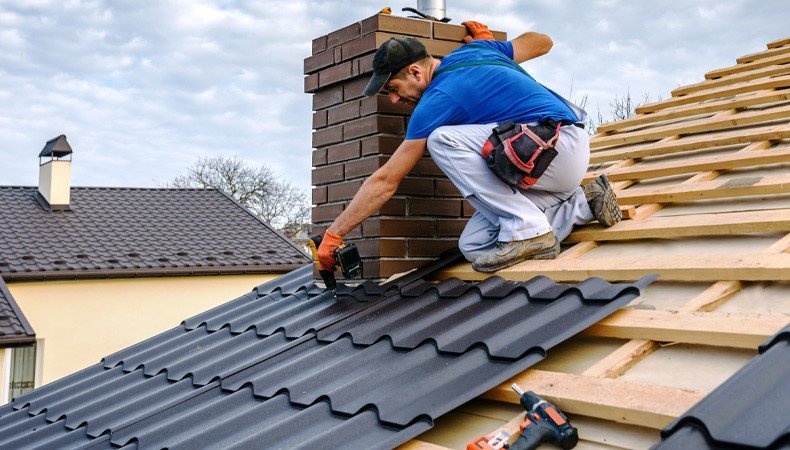Roofing is a crucial element of structure for a number of necessary reasons:
Protection from the Elements: One of the first functions of a roof is to offer shelter and protection from environmental parts such as rain, snow, wind, and extreme temperatures. Look at more info prevents water from coming into the building, which can cause structural injury, mold progress, and different points.
Structural Integrity: Roofs play a vital function in maintaining the structural integrity of a building. They distribute the burden of the roof and any loads (e.g., snow) evenly to the partitions and foundation. A well-designed and correctly constructed roof ensures the steadiness and safety of the whole structure.
Aesthetics and Design: Roofs are a visual and outstanding a part of a constructing's exterior. Architects use roof design to reinforce the overall aesthetics of a structure. The form, materials, and style of the roof can contribute to the architectural character and enchantment of a constructing.

Environmental Considerations: Sustainable architecture locations an emphasis on energy effectivity and environmental responsibility. Roofing materials and design can impact a constructing's vitality efficiency. For example, cool roofs can replicate more daylight and absorb much less heat, decreasing cooling costs and urban warmth island effects.
Natural Lighting and Ventilation: Roof design can incorporate options like skylights, dormers, and roof vents to provide natural lighting and ventilation within a building. This can enhance indoor comfort and scale back the necessity for artificial lighting and mechanical ventilation.
Historical and Cultural Significance: In some architectural styles, such as Gothic or Victorian, the roof is often a key element that displays the historic and cultural context of a building. Roof details and shapes can inform a narrative about the period during which a structure was constructed.
Space Utilization: Roof design can create extra usable area within a building, similar to attic rooms, rooftop gardens, or outdoor residing areas. Architects usually consider how to maximize house and performance when designing roofs.
Energy Efficiency: Energy-efficient roofing materials and design can contribute to a constructing's overall energy efficiency. Proper insulation and air flow may help regulate indoor temperatures and reduce heating and cooling prices.
Safety and Fire Resistance: Roofing supplies are chosen with safety in mind. Some supplies, like fire-resistant roofing, may help stop the spread of fires in a constructing, offering valuable time for occupants to evacuate.
In abstract, roofing is a basic aspect of structure that combines useful and aesthetic considerations. It not solely protects the interior of a constructing from the elements but also contributes to the general design, sustainability, and safety of a structure. Architects fastidiously think about roofing materials, shapes, and features to attain their design targets while guaranteeing the comfort and well-being of constructing occupants..
